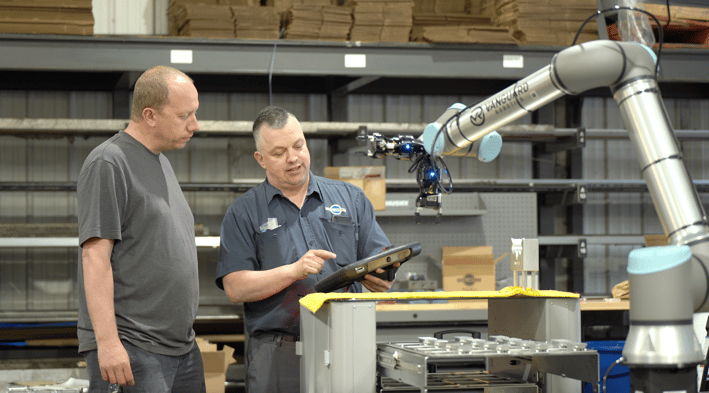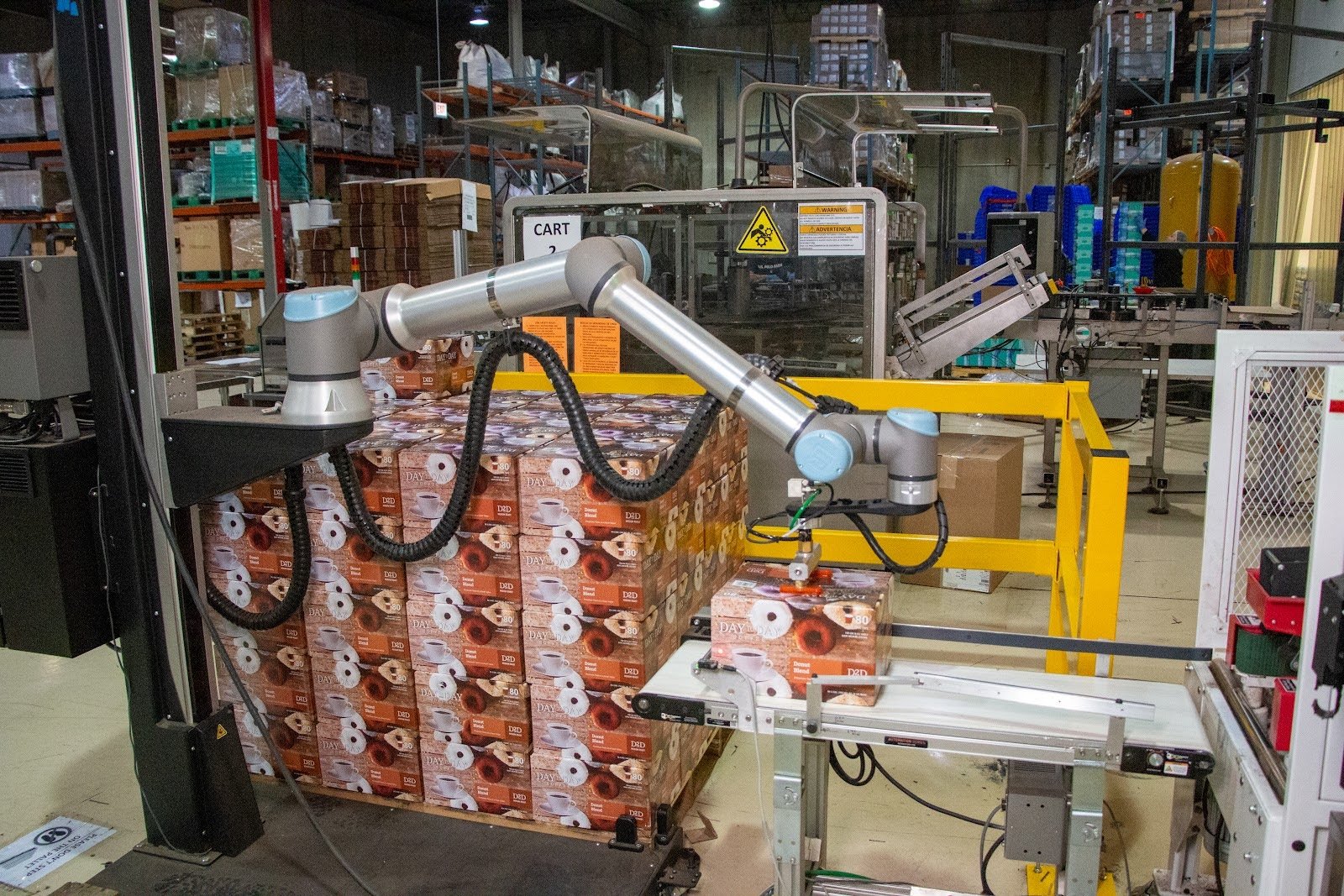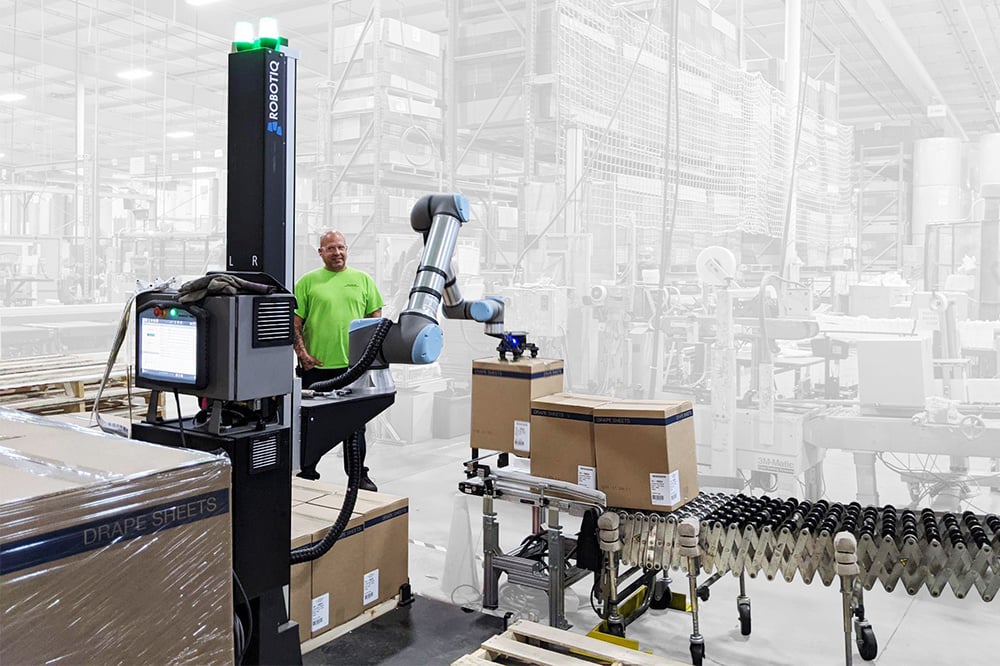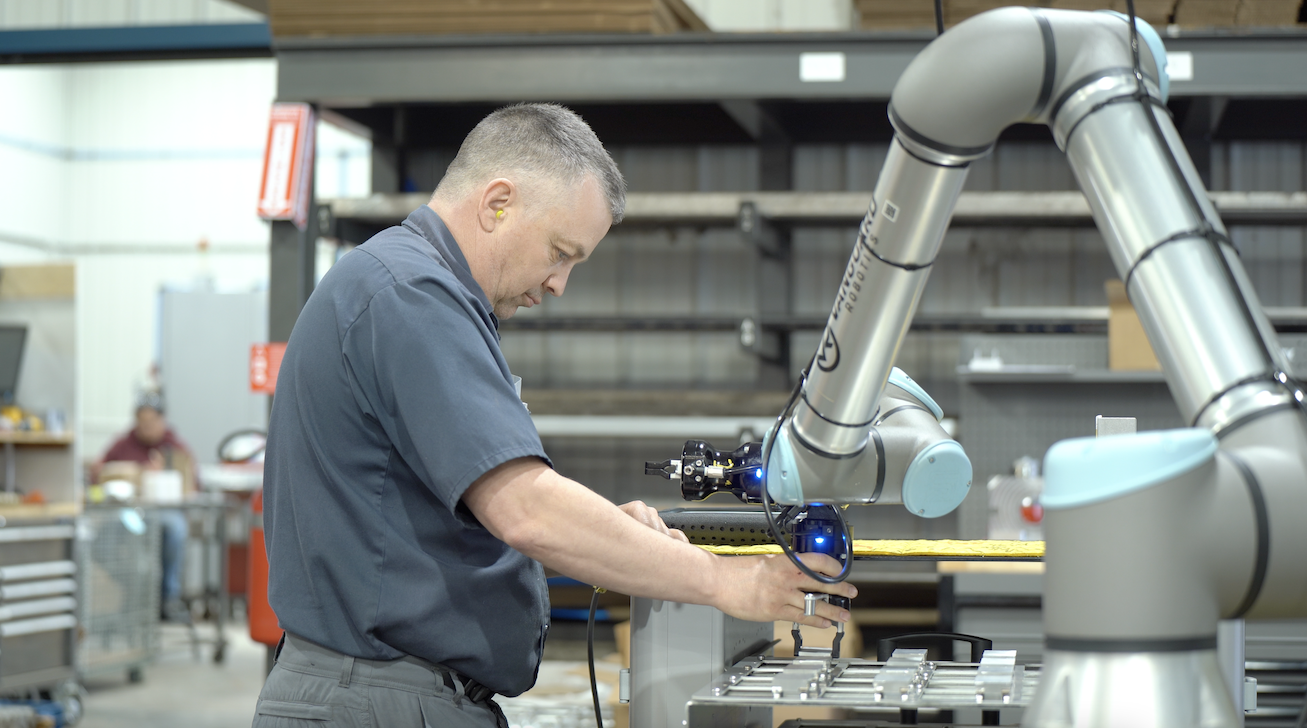Why Labor Shortages Are Shaking Up Manufacturers Worldwide

Posted on Jul 13, 2022 in Manufacturing
5 min read time
Manufacturing is one of the most important sectors in any economy. This should come as no surprise to you. As manufacturers, we are responsible for producing the goods and products that people use every day.
In many countries, a strong manufacturing sector is a sign of a strong economy. It creates jobs and acts as a barometer for wider prosperity.
But manufacturing industries across the world have been struggling recently. Labor shortages have become a particularly pressing problem.
Why does this labor shortage exist?
In this article, we explore the problem and suggest a potential solution…
The rising problem of labor shortages in manufacturing
Like many people, you might think that the worldwide Covid-19 pandemic is the culprit. Certainly, the pandemic is a factor. However, labor shortages were already a problem before 2020.
At this year's Automatica 2022 trade fair, we saw that a lot of companies are now feeling the effects of the labor shortage more than ever before… and they are looking for solutions.
In our interview with Robotiq's CEO Samuel Bouchard during the trade fair he noted the problem has been steadily growing for years. The pandemic just accelerated its effects.
Manufacturers across the world are finding it difficult to fill job positions. Though the situation affects all countries differently, its cumulative impact on the supply chain is affecting almost everyone.
Labor shortages influence almost every aspect of a manufacturing business' operations. If your suppliers don't have enough workers, orders will take longer to arrive, which then pushes back your orders and those of your customers.
This has a knock-on effect on everyone in your supply chain. We know many companies across industries are now having hard conversations with their suppliers and customers, as everyone pushes up their prices while trying to reduce their overheads.
.jpg?width=690&name=ernie-journeys-Ha2-2jGRJcI-unsplash%20(1).jpg)
What's causing these worldwide labor shortages?
There are many reasons for these labor shortages. It's hard to say exactly the cause of them, as they are complex and interdependent. The reasons also vary depending on your country.
At Automatica 2022, we heard many people talking about the pandemic and about the current war in the Ukraine. While these situations have a powerful impact on our industries, there are other underlying causes.
Some longer-term reasons for the labor shortage may be:
Desire for flexible jobs
One trend that sped up during the pandemic was people's desire for more flexible working conditions. Some companies have adapted to this, many have not.
Many younger people no longer want to commit to a job for life. They are more used to moving between companies and trying different things. This is especially true in developed countries amid labor shortages, where there are many opportunities to change jobs.
This is a challenge for manufacturing, where expertise in particular roles has traditionally been something that people gain over decades.
Negative perceptions of manufacturing
Another potential reason is that people have negative perceptions of manufacturing. Many people consider that manufacturing jobs are dull, dirty, and dangerous.
The reality is that manufacturing jobs are clean, safe, and mentally stimulating. However, this misconception still exists for many in the workforce.
Lack of diversity
Diversity is a hot topic right now and for good reason. As we heard at an Automatica discussion event, manufacturing is a traditionally male-dominated industry. According to a Deloitte study, female representation is 36% lower than in other industries.
This trend is changing, but it has an impact on labor shortage. With a less diverse labor pool, it means that manufacturing has access to fewer people to fill jobs.
The aging workforce
Finally, the aging workforce is a long-growing problem that has only been exacerbated recently. The pandemic prompted many older workers to retire early. This means there are fewer skilled manufacturing employees available.
At the same time, young people are spending longer in education. In many countries, this is generating a gap in job positions that companies are finding it hard to fill.
5 concerning consequences of labor shortages for manufacturers
In manufacturing, a labor shortage like the one that we are experiencing right now can have damaging consequences.
Some concerning impacts of labor shortages can be:
-
Production delays — With fewer workers, manufacturing processes are forced to slow down or even stop. This can cause lost revenue and market share.
-
Increased costs — When open job positions are plentiful, applicants expect higher wages. This means you have to raise wages at a time when you are already struggling to keep your budget afloat.
-
Safety risks — One impact you might not have considered is the increase in safety risks. When you're forced to operate with less staff than normal, workers may cut corners, which can lead to accidents and injuries.
-
Quality control issues — What do you get when you combine fewer workers with increased orders and a need to speed up production? If you're not careful, the result is a loss in quality control, which then affects the quality of your products and reduces customer satisfaction.
-
Reduced employee morale — Labor shortages also reduce employee morale for various reasons. People are forced to work longer hours in difficult conditions, and they may decide to just leave the job entirely.
The above consequences highlight the importance of addressing the labor shortage. Most manufacturers just can't afford to leave the problem unsolved.
Robotic automation: A viable solution?
At Automatica, we saw many companies looking at a particular solution to the labor shortage: automation.
You might have considered robotics and automation to fill the gaps that are arising in your workforce. And robots can certainly be a good way to reduce the strain on your existing workforce.
Robots can help you by taking the dull, dangerous, and dirty parts of manufacturing jobs away from the hands of workers. This can help us reduce the negative perceptions of the industry and attract the younger workforce to jobs.
And with pre-integrated robotic application kits, you don't need years of experience with robotics to start using them. You can get up and running in a few days.

What negative impacts of the labor shortage have you experienced? Tell us in the comments below or join the discussion on LinkedIn, Twitter, Facebook, or the DoF professional robotics community.






Leave a comment